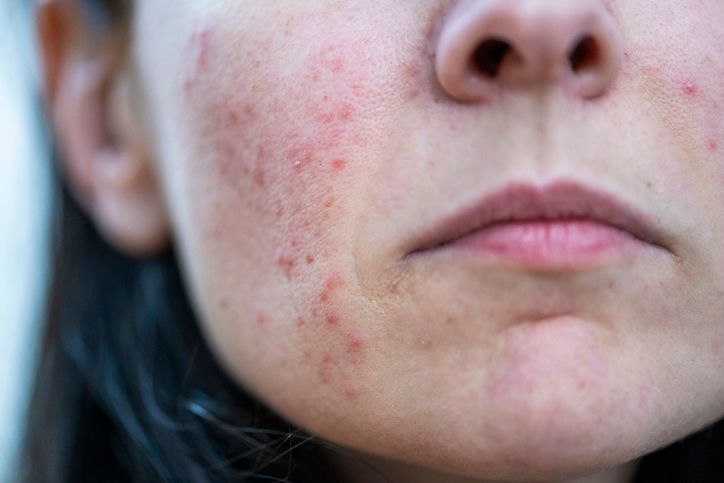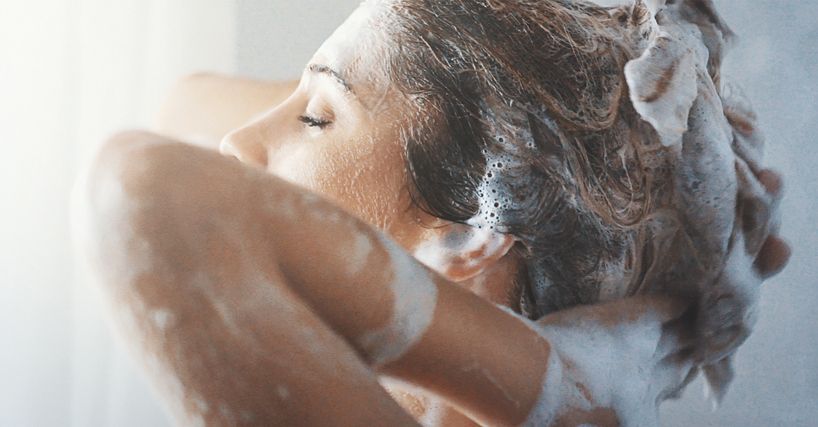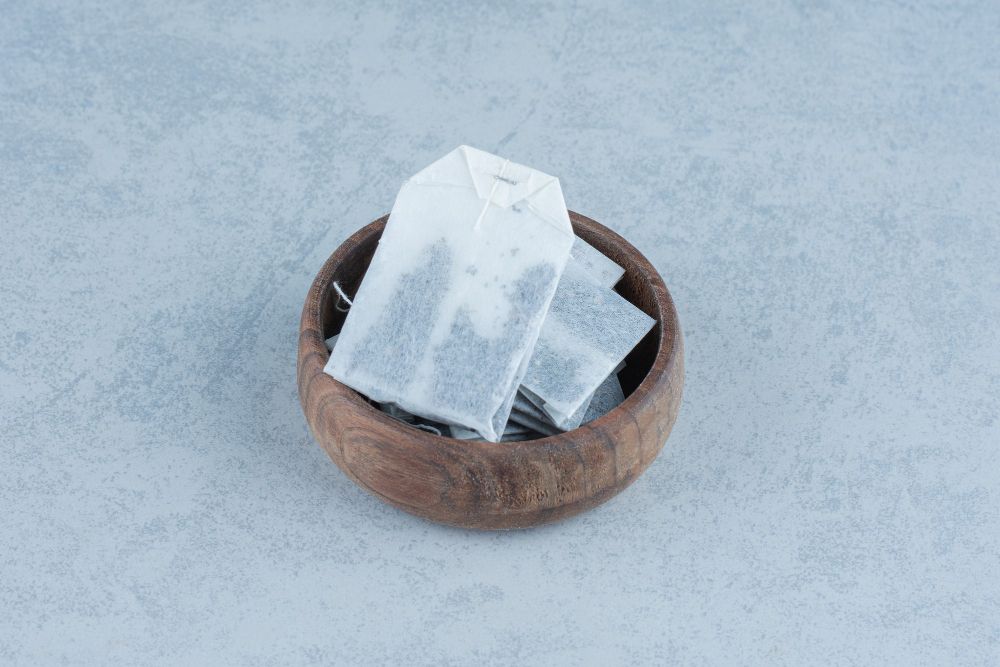

Book Now to Experience
F8 Hair Regrowth Treatment
1 Minute Self-Registration
Date should not be before minimal date
Author: Sophia Man|Updated: 23 July 2024
Most of us are blessed with a routine hair cycle that sheds weak hair and fills the scalp with thick and lustrous new hair strands. Hair is an integral part of our appearance and is a crown of confidence for us all. We tend to take a lot of effort into hair care and styling. Unfortunately, not all of us have the luxury of undergoing styling as some experience alopecia areata. Alopecia areata is a disorder that can devastate both attempts and overall appeal by causing extreme hair fall. It is an autoimmune illness in which the immune response assaults the body's natural hair follicles because it is incapable to identify between the body's hair shaft and external organisms. In this article, we will be looking in-depth into alopecia areata and its subcategories, the effect of alopecia areata in different ethnicity, the causes and symptoms of alopecia areata, as well as the meals that need to be avoided if you are diagnosed with this autoimmune sickness. We will also be looking at hair loss treatments that help with hair regrowth and how the F8 Hair Regrowth Treatment at New Beauty Singapore aids in hair regrowth using low-level laser energy to strengthen hair follicles and hair papilla for a continuous and healthy hair cycle!

1
What Is Alopecia Areata?
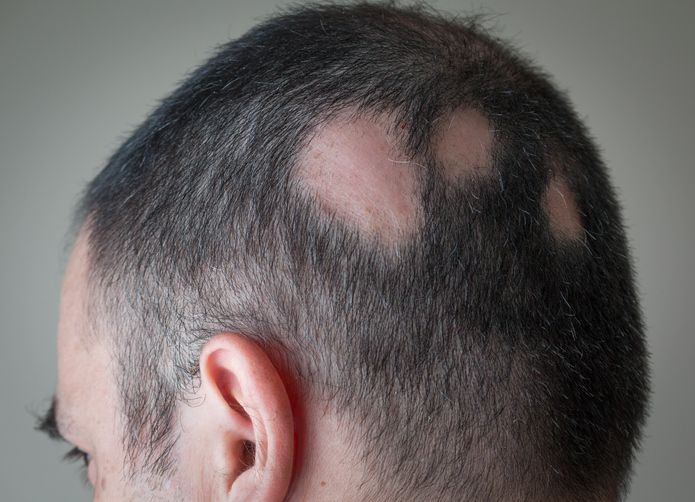
Alopecia areata is one of the autoimmune diseases that result in regions of hair loss. These spots may link and become increasingly visible as a consequence. The illness takes place when the immune system assaults the hair follicles, resulting in loss of hair.
In accordance with the NAAF (National Alopecia Areata Foundation), this type of hair loss affects roughly 7 million individuals throughout the United States. It can afflict persons of any race, gender, or age. Alopecia areata can develop during childhood or maturity. It is additionally unique to each individual.
Alopecia areata can affect the scalp, along with the eyebrows, lashes, and throughout the face, in addition to various regions of the body. It could also grow slowly and reoccur despite several years of inactivity.
Alopecia universalis is a disease in which individuals lose all of their hair throughout the body. Once the hair strands grow back, it is conceivable that you could undergo hair loss once more. The amount of loss of hair and growth differs by individual.
There is presently no treatment to address the cure for alopecia areata, however, there are some measures you may do to improve your overall view of the illness.
And per the NAAF (National Alopecia Areata Foundation), this type of hair loss isn't necessarily permanent. Because the hair follicles are active, hair can sometimes regenerate.
Many additional therapies could really assist the hair to grow back quicker and prevent any future hair fall, in addition to inventive ways to conceal hair loss. There are other services to assist you to manage anxiety, which can contribute to hair loss.


2
Types of Alopecia Areata
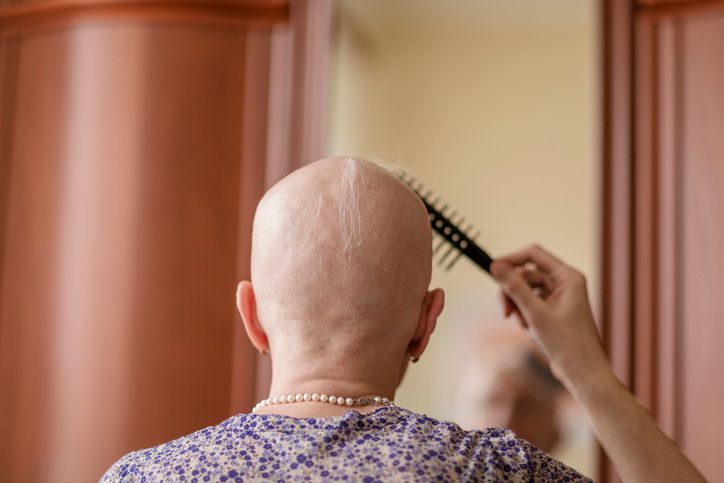
The same immunological reaction in the body causes alopecia areata as its hereditary elements are implicated. Each subgroup, nevertheless, can be defined depending on the extent, onset, and amount of loss of hair. are the three basic kinds of alopecia areata.
· Spotty alopecia areata · Alopecia totalis · Alopecia universalis
Patchy Alopecia Areata
Spotty alopecia areata is characterised by patches of baldness on the head and, in certain cases, other parts of the abdomen. This is the most prevalent kind of alopecia areata, and it causes hair to drop out in coin-sized chunks.
According to Dr Brittany Craiglow, MD, from the Dermatology Physicians of Connecticut and associate adjunct professor of dermatology at the Yale School of Medicine in New Haven explained that alopecia areata is a disease spectrum. She also mentioned that most patients have moderate, spotty illnesses including one or several circular areas of hair loss.
Spotty alopecia areata causes abrupt hair loss, although a few persons experience tingling or stinging before the afflicted hairs drop off. There aren't any rashes or scarring at the location of hair loss, though.
People may indeed observe that the hair strands immediately neighbouring the hair loss patch(es) are thinner and might even stand upright like punctuation marks.
The evolution of patchy alopecia areata differs. Hair regrowth can happen within several months, although new strands may well be grey or white initially. In some situations, spotty alopecia areata can advance to more extreme forms, resulting in extensive loss of hair in different regions of the body.
Alopecia Totalis
Alopecia totalis is characterised by more extensive scalp hair loss than spotty variants, resulting in entire or relatively close scalp loss of hair. People may notice a few small sections of baldness at first, which will increase and inevitably collapse together just to allow large patches.
Alopecia totalis is regarded as rare in general. In fact, according to one meta-analysis reported in the Journal of the American Academy of Dermatology, alopecia totalis contributes to approximately 0.08% of any and all alopecia areata cases globally. Nevertheless, it is uncertain how common this kind of alopecia areata is throughout the U.S.
Alopecia Universalis
Alopecia universalis, similar to alopecia totalis, can result in near or entire hair loss on the head. Alopecia universalis differs in that it causes total or broad hair loss on the face in addition to the remainder of the body. Based on the same meta-analysis, this represents the rarest but then most severe kind of alopecia areata, affecting approximately 0.03% of alopecia areata patients globally.
Alopecia universalis affects between 30,000 and 200,000 individuals across the United States, and experts think it is caused by a gene variant on chromosome 8p12. Alopecia universalis can lead to hair loss in the brows and eyelashes, in addition to areas of baldness on the scalp and throughout the abdomen.
Read More

3
Are There Other Types of Alopecia Areata?
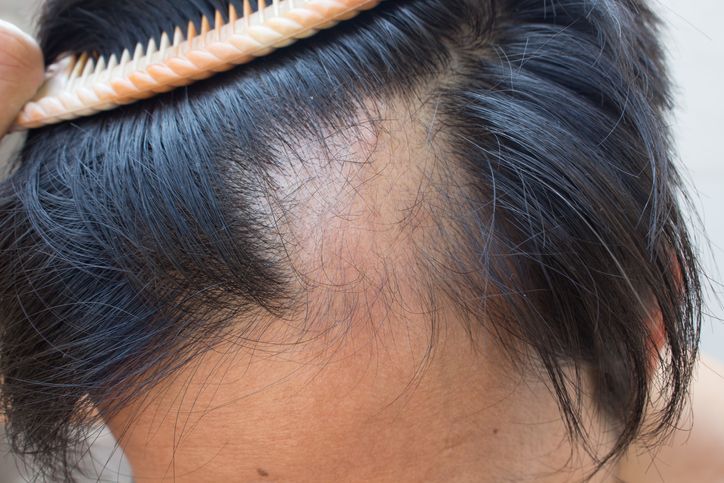
Although spotty alopecia areata, alopecia totalis, and alopecia universalis are among the most common varieties, there are also diffuse and ophiasis varieties to be aware of. Alopecia areata can indeed create nail difficulties in certain persons.
Diffuse Alopecia Areata
Diffuse alopecia areata is a less frequent type that causes abrupt and generalized hair loss on the scalp. This disorder can also be mistaken for those other varieties of hair thinning. Michele Green, MD, a New York City-based cosmetic dermatologist says that diffuse alopecia areata manifests as rapid hair loss throughout the head and is frequently confused with androgenetic alopecia or known as male or female pattern hair loss. This is also mistaken as telogen effluvium which is a temporary hair loss owing to a trigger.
Ophiasis Alopecia
Ophiasis alopecia, similar to diffuse alopecia, damages the scalp. Nonetheless, the concomitant hair loss develops a different trend all along the occipital cortex of the head, encompassing the side and lower back together into a wide strip. This variety might also be the hardest to cure.


4
Does Alopecia Areata Have a Specific Pattern?
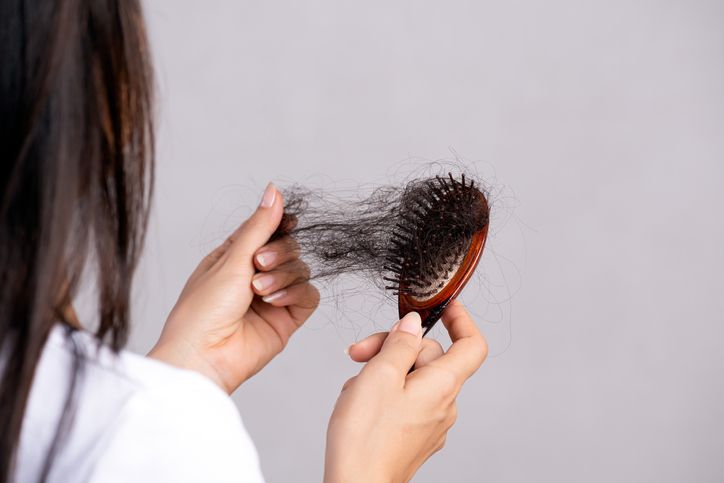
The illness cost of alopecia areata is not distributed evenly among all ethnicities. Some research suggests that African American and Hispanic women had a markedly higher incidence of the illness than Caucasian females. There is also evidence that Asian women have a reduced risk than Caucasian females.
However, just a few research have looked at the characteristics and factors of alopecia, and pathophysiological reasons remain mostly unknown. More study is needed that takes into account ecological, psychological, biological, and social economic aspects, as well as affordable healthcare access.
In accordance with 2020 research, the estimated chances percentages of an alopecia areata assessment for different ethnicities, with people of Caucasian descent as the control of various, are as continues to follow:
· 1.77 for African Americans · 1.27 for those other races, comprising Native Americans and Native Hawaiians · 1 for whites · 0.9 for Hispanics · and 0.4 for Asians
According to 2018 research from the Nurses' Health Study (NHS) and Nurses' Health Study II (NHSII) from over 1,100 females who have been diagnosed with alopecia areata, the odds for a diagnosis for Black women were 2.72, according to the NHS, and 5.48, according to the NHSII.
According to the NHSII, the probability for Hispanic women remained at 1.94 compared to white women. There weren't any major changes in occurrence depending on NHS.

Book Now to Experience
F8 Hair Regrowth Treatment
1 Minute Self-Registration
Date should not be before minimal date

5
What Are the Causes of Alopecia Areata?

Alopecia areata is indeed an auto-immune disease. Whenever the immune system misidentifies healthy tissue as foreign, an autoimmune disease occurs. Usually, the immune system protects the body from outside intruders like bacteria and viruses.
When you experience alopecia areata, the immune system assaults the hair follicles by mistake. Hair follicles are the organelles that hairs originate from. Hair loss takes place whenever the follicles shrink and stop generating hairs.
The exact reason for this illness is unknown to scientists. Some potential risk variables have indeed been discovered, which include:
· Gene factors, including having a close relative with alopecia areata · having specific medical disorders, such as Down's Syndrome, thyroid problems, or vitiligo · Lack of Vitamin D
Nivolumab-induced alopecia areata is another problem that can occur. This happens in persons who are taking the tumour medicine nivolumab. In many circumstances, hair loss indicates that now the medication is functioning.


6
What Signs to Look Out for Alopecia Areata?

Patchy hair loss is the primary noticeable indication of alopecia areata. Coin-sized clumps of hair drop off, primarily first from the scalp. However, any place of hair development, such as the moustache and lashes, could well be impacted.
Hair loss may happen suddenly, over just a few days, or gradually throughout a few weeks. Prior to hair loss, there may be stinging or blistering in the affected area. Because the hair follicles aren't destroyed, hair can regenerate if the follicle irritation calms. People who suffer only a few spots of hair loss usually recover completely on their own with no therapy needed.
Approximately 30% of people who get alopecia areata discover that their problem worsens or develops into a continual pattern of hair loss & growth. Alopecia areata affects roughly half of all individuals within the first year, but many will suffer from more than a single recurrence. Approximately 10% of persons will acquire alopecia totalis or alopecia universalis. Other initial symptoms include:
· Hairs with exclamation points This happens as a few short strands develop within or around the margins of bald areas, becoming thinner at the bottom. · Hairs from cadavers Hairs split before reaching the surfaces of the skin · White hair This may occur in areas of baldness.
What Food to Avoid When One Has Alopecia Areata?
Everything we consume for fuel on a regular basis could be the source of chronic alopecia areata. Listed below are some diets to ignore if you want to see a difference in hair loss.
· Dairy Milk products are laden with fat, which increases testosterone levels throughout the body. It is simply one of the many reasons for the loss of hair which has irritated many people. Milk products can also exacerbate skin problems such as eczema, dermatitis, and dandruff in persons who are susceptible to them. As a consequence, hair falls out.
· High sugar Poor blood flow is caused by excessive sugar intake. This makes supplying nourishment to the hair follicles more difficult. Some persons who ingest an excessive amount of sugar have scalp irritation. Due to limited blood flow, an inflamed head produces a burning sensation rather than an extremely chilly scalp. It, yet again, results in unhealthy hair.
· Modified Carbohydrates One of the numerous variables that lead to loss of hair is refined carbs, which can be found in pieces of bread, pastries, noodles, and pizzas. Foods that contain processed carbohydrates interfere with the body's stress mechanisms. And once consumed, they decompose into glucose.
· Polyunsaturated fatty acids Harmful Maize oil and sunflower extract oil contain polyunsaturated fats. In conclusion, eating heated foods instead of fried ones is preferred. Roast or boil the meal softly.
· Excessive Nuts You should avoid nuts if you are triggered by them. Most nuts contain selenium, which, while essential in low levels, can lead to loss of hair if consumed in excess quantities. Brazil nuts should be avoided since they are rich in selenium.
· Fatty foods The scalp secretes an oily substance known as natural oils or sebum. This sebum hydrates the hair as well as the epidermis on the scalp. However, when the body is overwhelmed with fat, the sebum becomes greasy. As a result, the hair will look lifeless and oily. As a result, thinning hair occurs because the oil that coats the hair shafts renders it impossible for the hair to develop.
· Carbonated beverages Fizzy drinks react with glucose in the blood, lowering its tolerance to sugar. It raises sugar levels, lowers blood circulation, and decreases nourishment reaching follicles, leading to loss of hair.
· Caffeine Caffeine is an excellent topical application hair growth stimulant, and far too much caffeine is not good for persons with hormone difficulties, particularly those who have low or high levels of cortisol.
· Nightshades If you suffer from alopecia areata, avoid eating jalapenos, tomato, eggplant, and potato because they contribute to inflammation.
Read More

7
What Is the Available Treatment for Alopecia Areata?
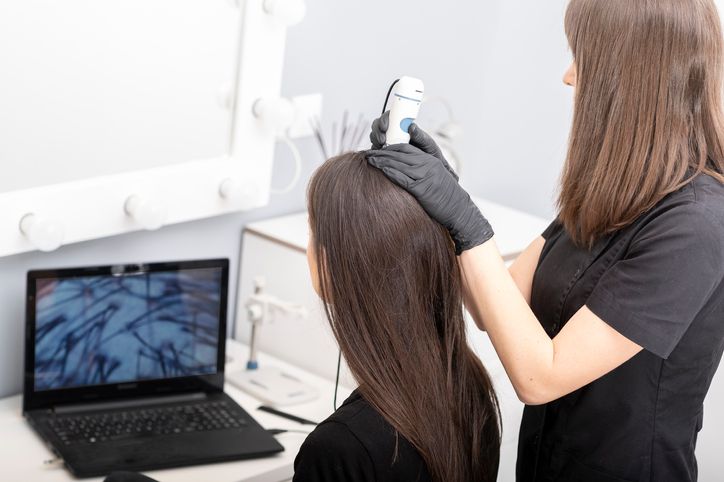
Injections of steroids
These could aid in the treatment of minor areas of baldness. A steroid solution is administered loads of times into the scalp. The steroid inhibits the defense system's assault on hair follicles.
This therapy may encourage regrowth after around four weeks. A person may need to continue therapy every several months. Hair growth can be both everlasting and transitory.
Dermal steroids (lotions and balms) and oral tablets
These will be extensively prescribed by doctors for alopecia areata, although their lengthy advantages are unknown.
Hair can return, however, there are downsides such as diabetes, stomach problems, itchiness, and occasionally hair regrowth in other regions. The longer the time a treatment is being administered, the more likely it is that adverse effects may occur.
Immunotherapy
This has been the most efficient hair fall remedy. Diphencyprone (DPCP) is applied to the hairless skin every week once in slowly increasing dosages. Hair regrows after around three months in people who react.
An allergic response, mild eczema or dermatitis, or a serious skin response are all potential side effects. Lowering the rate of dose increases may be beneficial. A child may experience vitiligo, or areas of hyperpigmentation, in rare cases. Hair loss may remain after treatment has been completed.
A cream containing dithranol
This is less successful compared to immunotherapy and has a higher risk of causing skin problems and itching. It can also cause stains on the hair and scalp.
Ultraviolet light therapy
After roughly a year, 2 to 3 rounds of phototherapy per week, generally done at the hospital, may provide benefits. The number of responses, unfortunately, is low.
Although there are natural and clinical medications available to address alopecia areata, not all of them have a lasting or lasting effect on hair growth and scalp health. Fortunately, we at F8 Hair Regrowth Treatment at New Beauty Singapore use low-level laser energy that encourages blood flow in the scalp’s capillaries thus ensuring the regrowth of stronger and thicker hair!


8
F8 Hair Regrowth Treatment: Treat Alopecia Areata for Healthy Hair Regrowth and Scalp!
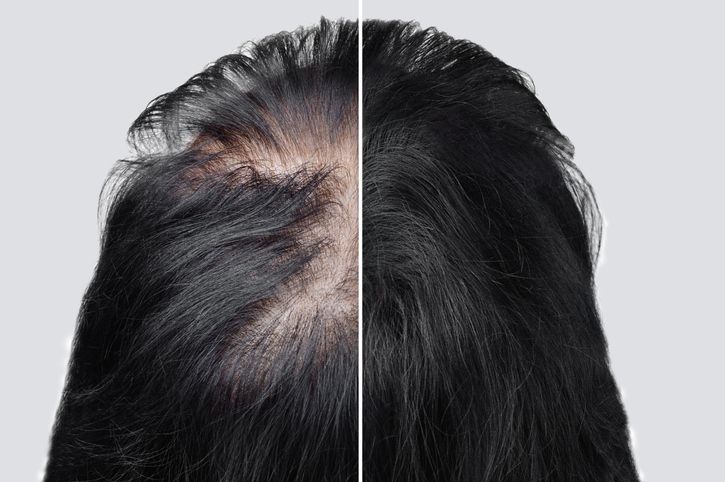
The F8 Hair Regrowth Treatment is a non-invasive hair loss treatment that uses low-intensity laser energy and hydrating serum to promote the growth of hair follicles and maintain the health of the scalp. The laser energy emitted by the F8 Hair Regrowth Treatment helps encourages blood circulation that carries essential nutrients for the healthy growth of hair follicles.
The hydrating serum used in the F8 Hair Regrowth Treatment helps to maintain sebum production in the scalp and unclog hair follicles as it improves the scalp's conditions. The serum also helps to hydrate the scalp thus reducing dandruff and itchiness. This hair regrowth treatment also helps to balance the water-sebum ratio on the scalp to avoid an oily scalp that inhibits the growth of strong hair.
This hair regrowth treatment is suited for individuals who are struggling with male pattern baldness, female pattern baldness, thinning hair, excessive hair loss, postpartum hair loss and of course, alopecia areata but do keep in mind that the F8 Hair Regrowth Treatment is not a cure for alopecia areata and its subcategories.

Book Now to Experience
F8 Hair Regrowth Treatment
1 Minute Self-Registration
Date should not be before minimal date

9
Conclusion

Alopecia areata is an autoimmune illness that can induce excessive hair loss thus making your scalp look patchy and unhealthy. With oral prescription and light therapies, alopecia areata can be reversed if treated earlier but not all treatment methods have a convincing success rate.
But if you are looking for a non-invasive hair regrowth treatment that does not utilise any surgical methods and external medications, the F8 Hair Regrowth Treatment is the perfect option for you. This non-invasive hair loss treatment not only helps to address hair loss issues but also tackles the cause of excessive hair loss as our in-house therapist studies the growth of your hair with a 200-magnification lens.
The F8 Hair Regrowth Treatment also helps to reduce alopecia areata symptoms after a couple of sessions but to see the effective results, you will need to consult with our doctors for a better and clearer understanding. Book your appointment today and treat alopecia areata for stronger thicker and healthier hair!
FAQ
What is alopecia areata?
Alopecia areata is an autoimmune illness that causes excessive loss of hair and patchy hair loss. This happens when the immune system cannot differentiate between hair follicles and external entities and alopecia areata comes in different categories depending on the severity of hair loss and the treatment method.
What causes alopecia areata?
Certain health conditions such as Down’s Syndrome, vitiligo, and thyroid issues can cause the emergence of alopecia areata. If you are related to someone with alopecia areata, you might be exposed to the disease due to genetic reasons.
How many sessions of the F8 Hair Regrowth Treatment will I need to see a difference in hair regrowth?
Each treatment plan is done within 3 to 6 months but the number of sessions depends on the severity of hair loss and the individual’s scalp and hair condition.
Does the F8 Hair Regrowth Treatment use any local anaesthesia during its course?
The F8 Hair Regrowth Treatment does not utilise any incisions, injections or external anaesthesia during the treatment process. The clinical-grade hydrating serum is also only applied onto the scalp after the laser emission section of the treatment and it does not cause any harm to the surrounding tissues.
Is the F8 Hair Regrowth Treatment appropriate for individuals with sensitive scalps?
The F8 Hair Regrowth Treatment is suited for individuals with sensitive scalps this hair regrowth treatment uses low-level laser energy coupled with a medical-grade hydrating serum that does not harm the scalp.

Book Now to Experience
F8 Hair Regrowth Treatment
1 Minute Self-Registration
Date should not be before minimal date
Recommended Articles
COPYRIGHT© NEW BEAUTY MANAGEMENT LIMITED 2025. ALL RIGHT RESERVED.

